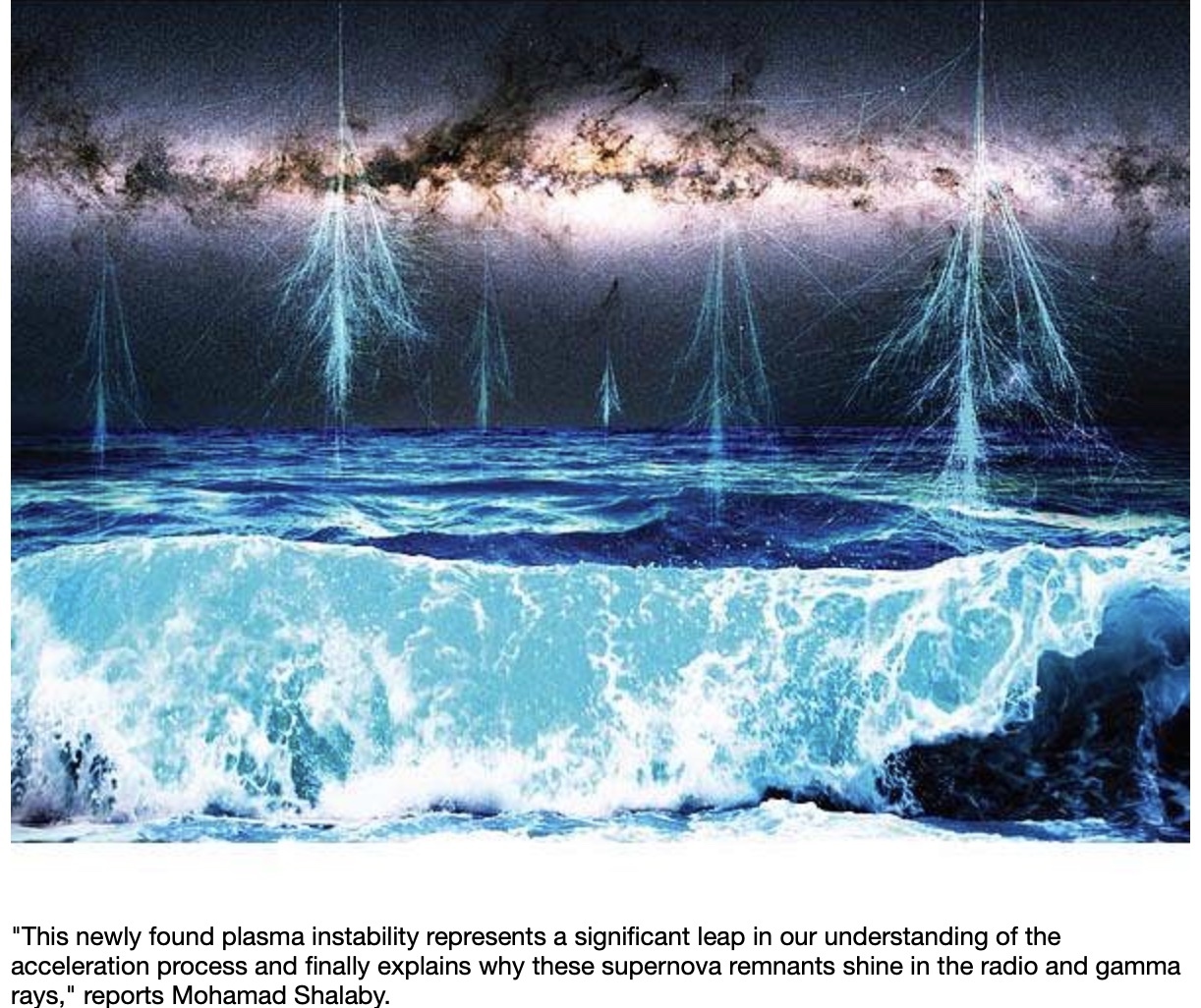16.12.2023

Scientists at the Leibniz Institute for Astrophysics Potsdam (AIP) have discovered a new plasma instability that could dramatically reshape our understanding of cosmic rays and their influence on galaxy dynamics. This novel finding builds upon the foundational work of Victor Hess, who, in the early 20th century, first identified cosmic rays as extraterrestrial in origin, challenging the then-prevailing belief that the Earth's atmosphere was ionized by ground radioactivity.
The AIP team, led by Dr. Mohamad Shalaby, embarked on an intricate journey of numerical simulations to trace the trajectories of numerous cosmic ray particles. These particles, primarily composed of high-speed charged particles from outer space, interact with surrounding plasma, a mixture of electrons and protons prevalent throughout the universe. The new study revealed a previously unknown interaction, wherein cosmic rays traversing the simulation space excited electromagnetic waves in the background plasma.
This interaction is pivotal in redefining our understanding of cosmic rays. "This insight allows us to consider cosmic rays as behaving like radiation and not individual particles in this context, just as it has been originally believed by Victor Hess," noted Professor Christoph Pfrommer, head of the Cosmology and High-Energy Astrophysics section at AIP. The phenomenon observed in the study suggests that cosmic rays, when considered collectively, can generate an electromagnetic wave that profoundly influences and is influenced by the plasma's fundamental waves.
Dr. Shalaby elucidates the importance of this discovery by drawing an analogy between the collective behavior of cosmic rays and water molecules in a wave. "This progress only came about by considering smaller scales that have previously been overlooked and that question the use of effective hydrodynamic theories when studying plasma processes," he explains.
The implications of this discovery are vast. One significant application lies in explaining the acceleration of electrons from thermal interstellar plasma to high energies at supernova remnants. "This newly found plasma instability represents a significant leap in our understanding of the acceleration process and finally explains why these supernova remnants shine in the radio and gamma rays," reports Dr. Shalaby.
Moreover, this novel plasma instability opens new pathways to understanding the fundamental processes of cosmic ray transport in galaxies. Cosmic rays have long been known to play a crucial role in galactic evolution, influencing phenomena such as star formation and the structural dynamics of galaxies. The insights gained from AIP's research could thus contribute significantly to unraveling the mysteries of galaxy formation and evolution.
The study, rooted in extensive numerical simulations and advanced theoretical modeling, reflects the continuously evolving landscape of astrophysical research. By shedding light on the intricate interactions between cosmic rays and plasma, the researchers at AIP are not only solving longstanding puzzles in astrophysics but also paving the way for future explorations into the enigmatic processes governing our universe.
Quelle: SD

